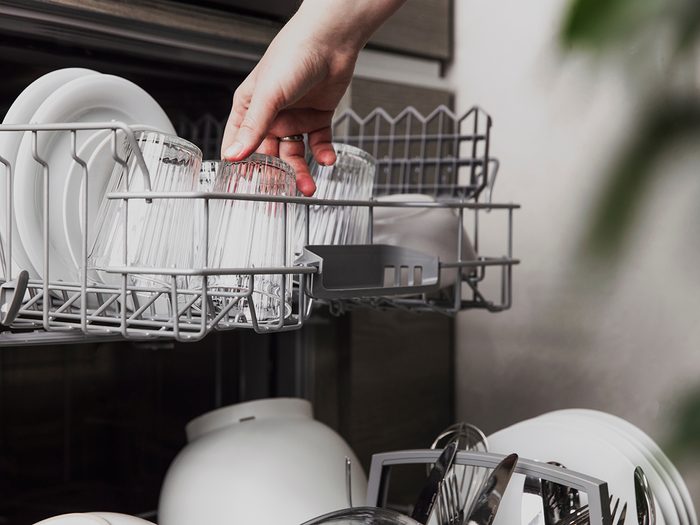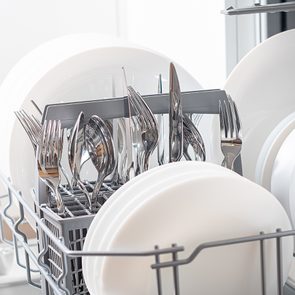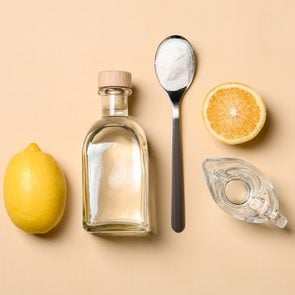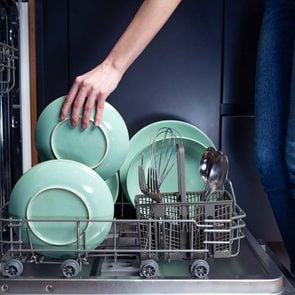If You See White Streaks on Your Dishes, This Is What It Means

Is your dishwasher leaving white streaks on dishes after each wash cycle? There are three common causes for this. Here's what you need to know.
Dishwashers are great time savers, as long as they’re working properly. Growing up in a house where every dish was washed by hand, I have a particular appreciation for these miraculous machines. Trouble is, like most complex time-saving devices, they occasionally fail.
Sometimes these failures are big, and obvious, like your dishwasher not actually cleaning dishes. Other times they’re smaller, but still hard to ignore. White streaks on dishes after a wash cycle is one way your dishwasher might let you down.
Why are there white streaks on my dishes?
There are a couple of reasons why you might be seeing white streaks or residue on your dishes after a wash cycle, and it comes down to the type of residue you’re seeing.
- Dry residue that wipes away easily: Chances are this is a salt residue left behind by your dishwasher. Many dishwashers have a built-in salt container that introduces salt to the water and detergent mixture to soften hard water. If you add too much salt to the container, too much salt will end up in your dishwater. In this situation, white salt streaks could easily appear on your dishes and cutlery.
- Dry residue that doesn’t wipe away easily: Is your household water supply known for being rich in minerals (AKA hard water)? If so, white streaks left on your dishes after a cycle in the dishwasher could be limescale buildup. I’m all too familiar with this problem since my own household water comes from a drilled well and we live on an island made of limestone. Limescale streaking on our dishes is nothing new. Luckily, it’s not too difficult to remove. Just drizzle a little white vinegar on the dishes and scrub the streaks. If the vinegar works, limescale is almost certainly the problem.
- Fatty, greasy residue: Some homeowners report creasy white streaks of fat left on their dishes after a cycle—gross! If this happens to you, chances are your water isn’t hot enough to fully melt and wash away the fat left on your dishes.
Is white residue on dishes harmful?
None of the common types of white streaks on dishes described above are dangerous. Salt residue, limescale buildup and residual grease are all harmless. You could ignore them if you choose, and suffer no ill effects eating off of white-streaked dishes. That said, I don’t recommend ignoring these symptoms. Even though the white streaks won’t hurt you, they usually indicate a problem with your dishwasher that could get worse if you don’t address it.
How do I stop white residue from getting on my dishes?
- For salt residue streaks: Add less salt to your dishwasher. In fact, if you don’t have particularly hard water, you don’t need to bother using salt at all.
- For limescale streaks: To remove limescale, clean your dishwasher with vinegar. Fill a bowl with 1 cup of distilled white vinegar and place it in your washer’s top rack. Run a regular wash cycle with no other dishes in your washer. Chances are this will remove all the limescale streaking. If it doesn’t, repeat the process. When the limescale is gone, run one more regular cycle to flush any remaining vinegar from your dishwasher.
- For fat residue: Try increasing the temperature your dishwasher is set to. Most dishwashers have a main wash cycle temperature of 120 to 140ºF (50 to 60ºC), then a final blast of around 150ºF (65ºC) to remove any remaining grime. Double-check your dishwasher is connected to a hot water pipe supplying water around 120ºF (50°C).
Now that you know what’s causing those white streaks on your dishes, find out the surprising ways you’re shortening the life of your dishwasher.






